
Weather forecast of Paris, to 15 days, 3 months trends

This post is also available in:
![]()
Weather forecast of Paris is one of the most important elements of your stay.
Although Paris enjoys a temperate climate that is pleasant for its inhabitants, the seasons are differentiated and marked differences from day to day are often the case.
But what’s important for you as a tourist is that the weather during your stay is suitable for what you want to see and visit.
We’ll show you where you can find the most reliable information you need.
What you need to know about the weather forecast of Paris
To organize your stay, you need to know the likely temperatures and the risk of rain. This information is useful :
- three months in advance if you’re in the preparation phase, in particular to choose the season for your visit
- 15 days in advance if you’re in the home stretch before departure
- 7 days before for final preparations
- between 1 and 4 days if you’re already in Paris, to adjust your schedule and decide what to wear
- hour by hour for the next 2 days, or even if it’s going to rain or not in the next hour, to adjust your daily visit schedule.

Météo-France, specialists based in Paris and throughout France
We have chosen to work with Météo-France, because France is their preferred area of study, and because their meteorological engineers are internationally renowned for their skills. They are also constantly on the lookout for new, more precise algorithms. What’s more, they are equipped with the very latest technology, including high-powered supercomputers for data processing.
Météo-France is a public institution. It contributes to the safety of the French people, delivers forecasts and data worldwide, contributes its expertise to meet climate challenges, and participates in advances in meteorology and climate science research. All over the world, Météo-France is also responsible for paying for services to industry, commerce, agriculture and transport: these are demanding customers with major interests at stake. In other words, Météo-France is the serious source of information you need to plan your stay in Paris.
What information can private individuals (tourists) obtain from Météo-France?
On its websites, Météo-France continuously updates :
- 3-month weather trends
- 1, 2, 3, 4 and 5-day weather forecasts… up to 15 days ahead
- Hourly weather forecasts for the next 2 days and hourly rainfall forecasts for a given address
- And this for a geographical location defined by the whole of France, the region, the city and, in the case of Paris, for the arrondissements.
Where to find and how to use Météo-France information on the weather forecast of Paris
To find this information, click on
- The weather for the whole of France – then click on AUJOURD HUI (Today), or DEMAIN (To morrow), or WEEK END or 7 JOURS (7 days), or 15 JOURS (15 days) or TENDANCES à 3 mois (Trends). You’ll get the weather (temperatures, rainfall, sunshine) for mainland France. This gives you a global view of the weather around where you are. See below for an example, dated November 1, 2013.
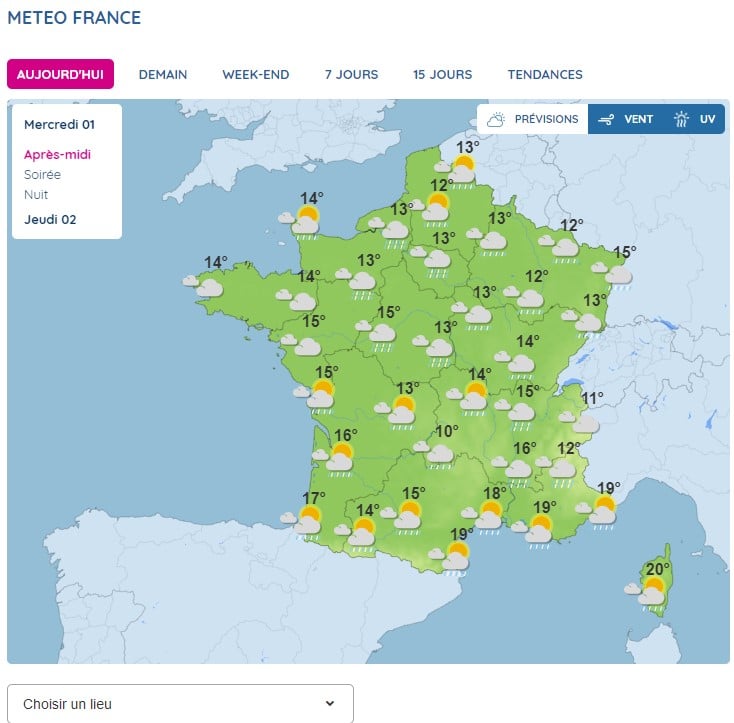
- The weather of Paris – then click on AUJOURD HUI (Today), or PAR HEURE (Hourly forecast), or DEMAIN (To morrow), or WEEK END or 7 JOURS (7 days), or 15 JOURS (15 days) or TENDANCES à 3 mois (Trends). This is where we come in: the weather during your stay in Paris.
Below the forecast table, you’ll find two windows:- Rainfall in the hour, which predicts when in the next hour, for the location of the previous forecast, you’ll have rain or no rain, or sunshine.
- Comparison with normals. This shows the normal maximum and minimum temperatures for the month, and the difference with the day’s max. and min. temperatures.
Copy below only for example, for AUJOURD’UI (TODAY) on November 1, 2013.
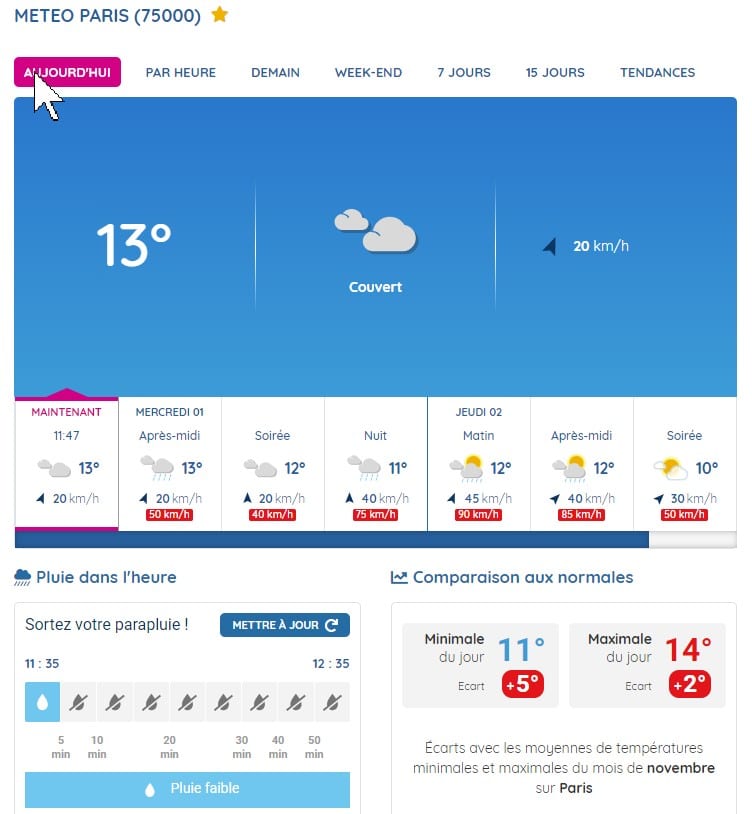
Copy below in only an example, by clicking PAR HEURE (PER HOUR)) dated November 1, 2013.
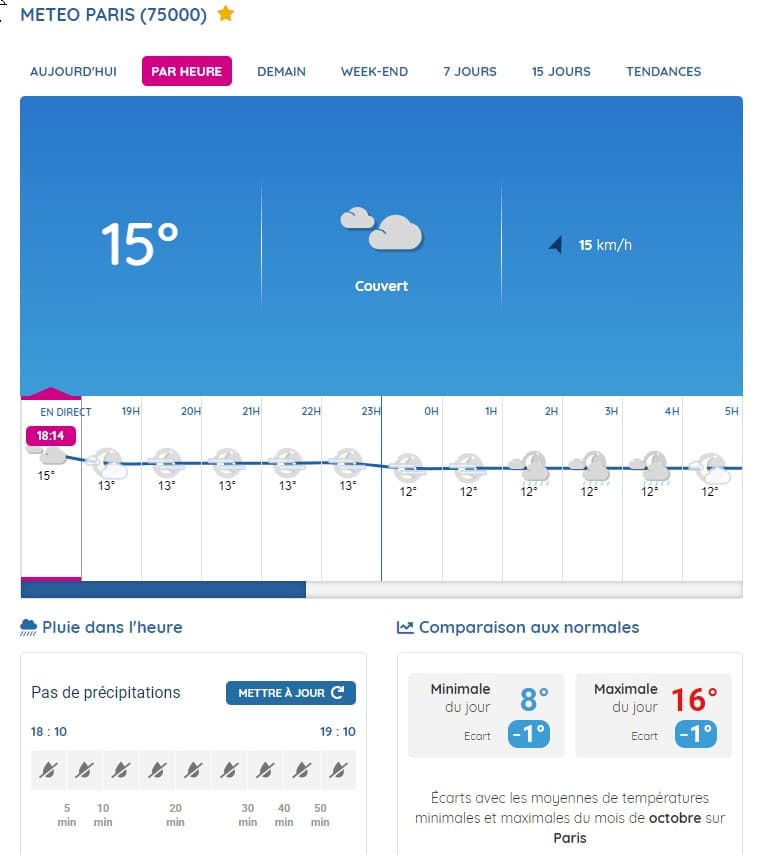
Reference values for weather statistics for France and Paris
To complete our weather forecast of Paris for TOMORROW, WEEKEND, 7 DAYS and 15 DAYS, we have listed below the weather statistics for Paris. These are the values recorded in previous years for temperature, precipitation, sunshine … All these values are of major interest to you in order to choose, for example, the season when you wish to visit Paris, but also what clothes to take for the duration of your stay.
| Mois | J | F | M | A | M | J | J | A | S | O | N | D | Année |
|---|---|---|---|---|---|---|---|---|---|---|---|---|---|
| Température moyenne (°C) | 4.3 | 4.6 | 7.4 | 10.7 | 14.3 | 17.7 | 19.8 | 19.4 | 16.4 | 12.6 | 7.9 | 4.8 | 12,1 |
| Température min. moy. (°C) | 1.7 | 1.4 | 3.2 | 5.8 | 9.5 | 12.8 | 15 | 14.6 | 11.9 | 9.2 | 5.1 | 2.3 | 8,6 |
| Température max (°C) | 6.9 | 8.1 | 11.6 | 15.2 | 18.6 | 22.1 | 24.2 | 24 | 20.9 | 16.4 | 10.7 | 7.5 | 15,5 |
| Nbre jours avec temp. max. ≤ 0 °C | 2,1 | 0,83 | 0,13 | 0 | 0 | 0 | 0 | 0 | 0 | 0 | 0,17 | 0,77 | 4 |
| Nbre jours avec temp. max. ≥ 25 °C | 0 | 0 | 0 | 0,47 | 3,93 | 7,27 | 13,73 | 13,03 | 4,17 | 0,43 | 0 | 0 | 43,03 |
| Nbre de jours avec temp. max ≥ 30 °C | 0 | 0 | 0 | 0 | 0,13 | 1,3 | 3,47 | 3,47 | 0,4 | 0 | 0 | 0 | 8,77 |
| Nbre jours avec temp. max ≥ 35 °C | 0 | 0 | 0 | 0 | 0 | 0 | 0,13 | 0,33 | 0 | 0 | 0 | 0 | 0,47 |
| Nbre jours avec temp. max ≤ 0 °C | 2,1 | 0,83 | 0,13 | 0 | 0 | 0 | 0 | 0 | 0 | 0 | 0,17 | 0,77 | 4 |
| Précipitations (mm) | 57 | 52 | 53 | 56 | 69 | 63 | 60 | 60 | 51 | 65 | 64 | 70 | 650 |
| Nbre jours avec précipitations ≥ 5 mm | 3,77 | 2,83 | 3,17 | 3,6 | 4,57 | 3,53 | 3,9 | 2,67 | 3,77 | 3,47 | 3,83 | 4,17 | 43,26 |
| Nbre jours avec précipitations ≥ 1 mm | 10,2 | 9,33 | 10,4 | 9,37 | 10,3 | 8,63 | 7,97 | 6,87 | 8,47 | 9,47 | 9,73 | 10,7 | 111,43 |
| Humidité(%) | 85% | 81% | 76% | 71% | 71% | 68% | 65% | 66% | 71% | 79% | 86% | 86% | |
| Jours de pluie (jrée) | 9 | 8 | 8 | 9 | 9 | 8 | 8 | 7 | 6 | 8 | 9 | 10 | |
| Ensoleillement (h) | 59,4 | 85,6 | 127,8 | 165,6 | 197,6 | 200,5 | 227,4 | 230,7 | 174,3 | 125,5 | 79,8 | 50,6 | 1 724,6 |
| Nbre de jours sans ensoleillement | 12,43 | 8,3 | 5,83 | 2,6 | 2,47 | 1,87 | 1,13 | 0,83 | 1,9 | 5,13 | 8,73 | 13,83 | 65,06 |
| Nbre de jours avec ensoleillement ≥ 1 h | 14,27 | 16,46 | 21,23 | 24,9 | 26,4 | 26,3 | 27,8 | 29 | 25,73 | 22,17 | 16,83 | 12,53 | 263,62 |
| Nbre de jours avec ensoleillement ≥ 5 h | 4,97 | 8,26 | 12,47 | 15,63 | 17,93 | 18,23 | 20,27 | 21,37 | 16,7 | 12,3 | 7,53 | 4,17 | 159,83 |
Summary of Paris weather statistics
Paris is 150 km from the North Sea and English Channel. Paris’ climate is therefore oceanic, but “alternated”: the continental influence is felt a little, but is much less important than the oceanic influence. This translates into a “mixed” climate. Summers (June 1 to August 31) are fairly hot (19.7°C on average – 67,46°F), winters (December 1 to February 28) mild (5.4°C on average – 41,72°F) with frequent light rainfall throughout the year and changeable weather, but with less rainfall (only 637.4 millimeters over the year) than on the coast.
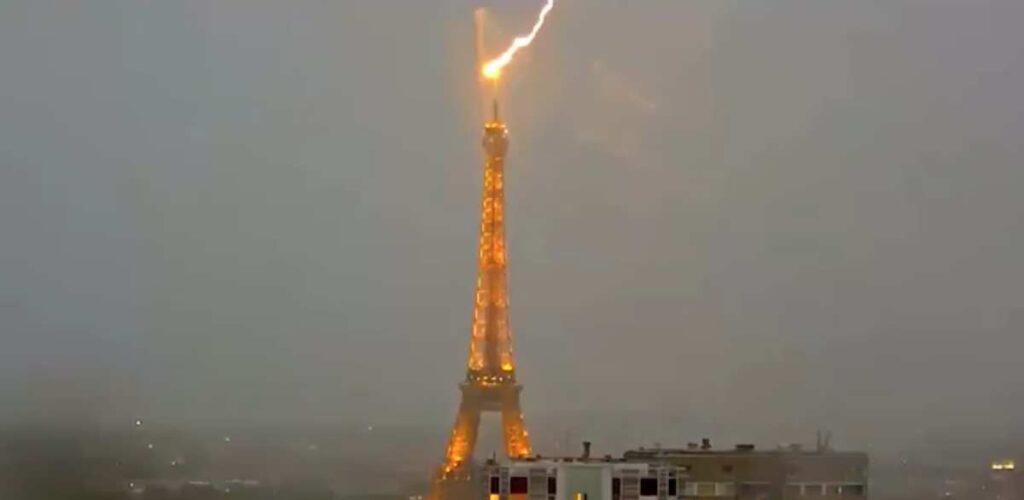
The urbanization of Paris is an additional factor. It has led to an increase in temperature (+2°C – 5°F – on average over the year, compared to forested areas), and a decrease (disappearance) in the number of foggy days (now practically non-existent). What’s more, when the temperature rises above 30°C, the relatively low humidity and dew point make the non-humid heat very bearable.
Sunshine is around 1,700 hours a year, which is relatively low.
The wind is generally moderate (fifty days with gusts over 50 km/h), mostly from the west/southwest. However, it is often disrupted by the Azores anticyclone. For example, on December 26, 1999, during the first major storm to sweep across Europe, gusts of over 220 km/h were recorded at the top of the Eiffel Tower.
The 637.4 millimeters (average) of annual precipitation is very evenly distributed throughout the year, with extreme values of 41.2 millimeters in February and 63.2 millimeters in May. On average, Paris sees 111.1 days of rain per year, but while this is fairly frequent, it is not very sustained. Thunderstorms occur on average 18 days a year, mostly between May and August.
Since records began at Parc Montsouris (south of Paris), the driest year was 1921, with 271.4 millimetres, and the wettest was 2000, with over 900.8 millimetres.
Theoretically, snowfall are only 12 days a year, but it rarely lasts more than a day in inner Paris.
A few practical tips to make life easier for tourists during their stay in Paris
Temperatures
The temperature between day, evening and night (other conditions being equal): so that you can make an informed choice about what to wear.
- The highest temperature of the day is between 3 and 5 pm in the afternoon. The lowest temperature is between 2 and 5 a.m. at night.
- The temperature difference between daytime (2 to 4 p.m.) and evening (9 to 11 p.m.) can easily be more than 10°C (18°F) in summer and 15°C (27°F) in winter (between 2 to 4 p.m. and 8 a.m.). Provide “layers” of light clothing, easy to take off and put on again – and to carry – to stay comfortable in all circumstances.
- Bring headgear for temperatures below 10°C (50°F) – and gloves.
- There are only 1 or 2 days in July and/or August when temperatures are likely to exceed 35°C (95°F). At the same time, air humidity is low (65% to 68%), which avoids the discomfort you might feel in Washington DC or New York, for example. Temperatures in July and August are usually between 25 and 30°C (77 and 86°F). But beware: on hot days(1), night-time temperatures can remain at 25°C (77°F) all night long, tiring the body.
(1) How hot is a heatwave ? In Western Europe, a heatwave is defined as a night-time temperature of over 18-20°C (35°F) and a daytime temperature of over 30-35°C (95°F). In mainland France, the peak period for heatwaves is from July 15 to August 15. But it lasts 2 ou 3 days in a row, not more.
Rains in Paris
It rains only about 60 mm per month, but there are 8 to 9 rainy days with less than 1 mm of water. This means that most of the rain is scattered, light and short-lived. However, to make getting around Paris easier, avoid umbrellas (close, open, drip, take the metro, etc.). The easiest way is to use a light, foldable, hooded overgarment – instead of an umbrella.
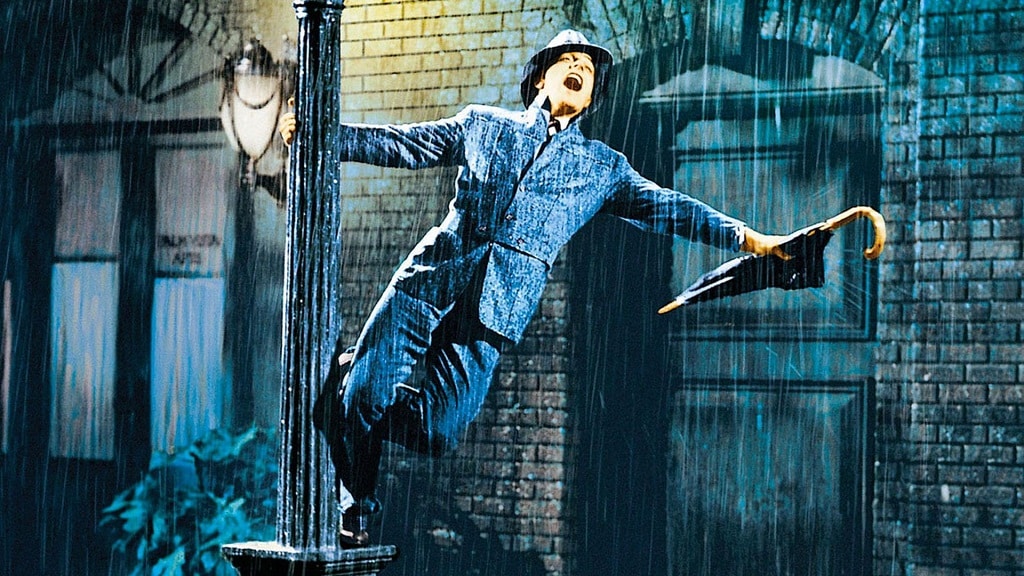
The wind
Wind is fairly rare in the city, and not very violent. However, you may encounter wind shifts at street crossings. This still argues for the use of a hood and the abandonment of the umbrella.
Weather constraints for Météo-France
Weather forecast of Paris is a tricky business, as the country is subject to a number of sometimes contradictory phenomena.
- The only certain parameter is that France lies in the northern temperate zone (the 45° parallel passes through Valence in France, 65 km south of Lyon and 450 km south of Paris). But the rest of the parameters are more random, changeable and even contradictory.
- Metropolitan France has 5,500 km of coastline. This is primarily the western coastline, bordered by the Atlantic Ocean and the English Channel. Because of the Earth’s rotation, westerly winds predominate (although not always, thanks to the Azores Anti-Cyclone). The other southern facade is bathed by the closed Mediterranean Sea, a source of important heat.
- The mountain range of the Alps forms the eastern (but not total) border, and the Pyrenees form the southern border with Spain. On the other hand, the north and part of the east is a plain where winds from Russia meet no barriers. An incredible sum of physical disturbances with meteorological repercussions. Added to this are the Massif Central mountains in the middle of France and a few small mountains in Brittany, the Ardennes, the Vosges and the Jura in the east.
- In the Atlantic Ocean and close to Europe’s coasts, and thus to France, is the warm Gulf Stream current from the Caribbean. It modifies the climate by raising the ocean’s temperature. So much so, in fact, that even the Pacific El Nino and La Nina currents are also taken into account for climate forecasts in France.
- Finally, there is a zone of atmospheric high pressure known as the Azores anticyclone, which is not stable over the Azores Islands in the middle of the Atlantic. It moves most often over the eastern Atlantic Ocean and can reach as far as north of Europe, but can also go a few thousand km inland (Central Europe).
The wind blows naturally from the west (due to the earth’s rotation). But this anticyclone, whose own rotation is all the time clockwise, totally disrupts the normal direction of winds, and therefore of clouds, and therefore of rain and temperature values.
Indeed, the normal trajectories of winds from west to east are deviated according to the geographical position of the anticyclone of the moment on Europe. In the end, winds can come from the Sahara (Sirocco wind, bringing heat and desert sand) or Russia (North wind, accentuating cold in winter, lowering temperatures in summer). Hence air temperature, wind speed and direction. To find out more, see our article on Climate of Paris and France –>URL
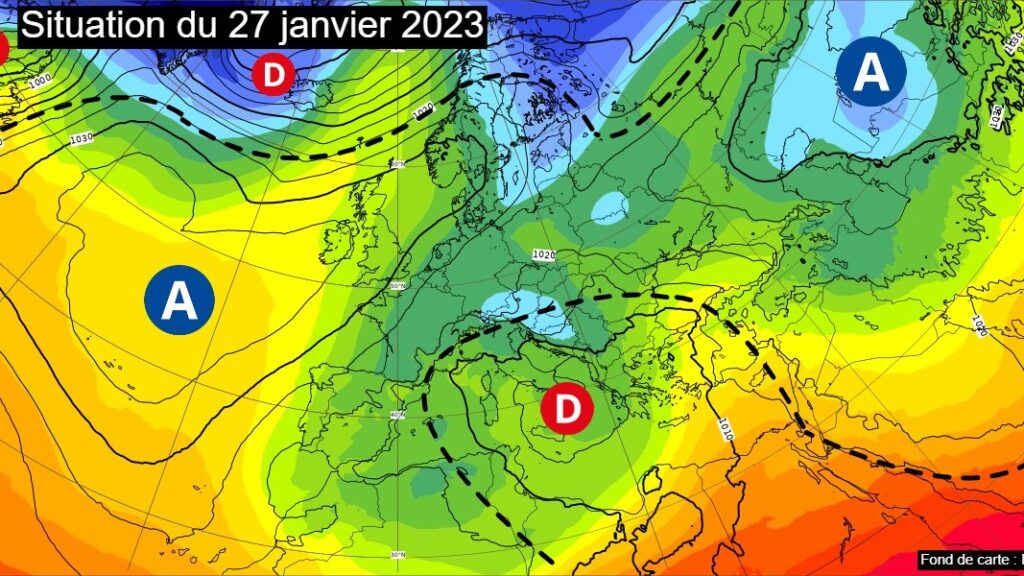
The accuracy of Météo-France weather forecast of Paris
This information will certainly be of interest to you when planning your stay and your local walks, which are directly affected by temperature and rainfall. And you’re certainly looking for accurate weather forecast of Paris you can rely on.
Despite all these meteorological constraints, Météo-France weather forecast of Paris, is able to provide
- forecasts that are 90% or more reliable over a period of 1 to 4 days
- hour-by-hour forecasts 95% accurate
- 100% “risk of rain within the hour” forecasts
- 70% accurate forecasts for the coming weekend
- 50% accurate forecasts between 7 and 15 days ahead
- 3-month trends (which are not forecasts, but statistical data) that predict the “chance” (as a percentage of success) of temperatures and rainfall being higher than, equal to, or lower than the values of temperatures and rainfall levels normally (statistically) encountered for the period, in previous years.
However, even for short-term forecasts, there can be minor errors in weather forecasting. There are 2 reasons for this:
- Either your location is on the edge of the forecast rainy (or sunny) zone. In this case, the winds may change angle by a few degrees, deflecting the clouds by a few kilometers. Fifty kilometers of deviation from the clouds’ trajectory is infinitesimal on the scale of the sky, for a 24-hour forecast for example. But to remain optimistic, a change in cloud trajectory can certainly bring you unexpected rain, but also unexpected sunshine, if you’re on the right side of the “rain-sun” line.
- Either the rain arrives earlier or later than forecast. This is unpleasant when you’re planning a visit or a walk. But it’s also due to the effects of winds, whose speed varies constantly, speeding up or slowing down the movement of clouds and rain.
Now you know (almost) everything about the weather you’ll have during your stay in Paris. For more information, we’ve published a complementary article on Climate in Paris and France.
We hope you will enjoy your stay in Paris.
We also recommend our Self-Guided Walks , documenting 15 to 25 historical and anecdotal Points of interest along the route. They are designed for the curious who want to learn more about France’s capital. They are complemented by Relaxation Breaks (URLs) in local shops, all of which have been recommended by previous tourists. These breaks are designed to enhance your strolls (coffee breaks, restaurants, etc.) with useful addresses (shopping breaks), so you can relax and recharge your batteries at the same time !